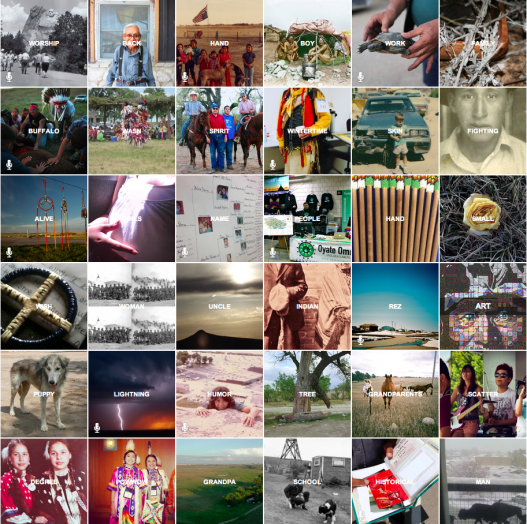Photographer Aaron Huey set out seven years ago to capture images of poverty in America. The mission brought him to Pine Ridge Indian Reservation in South Dakota, where 90% of the residents live below the poverty line and life expectancy for men is just 47 years, largely because of violence. As Huey says in his powerful TEDxTalk, the photo project soon became much more — an effort to understand the history of the native Lakota people, “a time-line of treaties made, treaties broken and massacres disguised as battles.” He sees this history as deeply connected to the statistics of today.
“The last chapter in any successful genocide is the one in which the oppressor can remove their hands and say, ‘My God, what are these people doing to themselves? They’re killing each other,’’’ says Huey in his talk.
Now, Huey’s images of Pine Ridge Reservation appear on the August cover of National Geographic magazine (see it, after the jump), alongside a piece by Alexandra Fuller, “In the Shadow of Wounded Knee.” But the printed magazine is just the beginning of the story.
Huey, who spent last year as a Knight Journalism Fellow at Stanford University working on community journalism, teamed up with Jonathan Harris, who gave a TEDTalk about his unique platform for telling stories online, to create the Pine Ridge Community Storytelling Project. The project melds photographs, audio interviews and text to let the people of Pine Ridge “author their own story,” as Huey explains.
In the interactive portfolio, Tom Swift Bird tells the story of the “first racist I ever encountered,” who happened to be a 3-year-old. Kyra Poor Bear writes about the plight of reservation dogs. And Peter Paha talks about why the Lakota people say, “Now the Thunders are returning,” when storms move in over the Black Hills.
Funding and support for this project came from the Knight Fellowship and a grant from the John and James L Knight Foundation. And Huey also thanks TED for his project moving in such fascinating directions.
“I wanted to share this accomplishment because it would not have happened with out TED,” he wrote in an email.
Huey’s TEDTalk led to a second collaboration as well — Honor the Treaties, with street artists Shepard Fairey and Ernesto Yerena. Seeking funding via crowdsourcing, the group has placed large-scale murals, with messages like “The Black Hills are not for sale,” in more than a dozen American cities. The two also released the print below this week.
“I can’t imagine ever working alone now,” writes Huey. “Every project I have planned combines my networks and knowledge with a partner’s, and I see many TED collaborations in the future, for both myself and others.”
Side notes: Huey writes on Cowbird.com about being ambushed by the Taliban in Afghanistan — and the life-changing event it inspired.



Comments (10)
Pingback: Playlist: a TED intern picks the classic school schedule, in talks « Content Curated By Darin R. McClure & a few photos
Pingback: Playlist: a TED intern picks the classic school schedule, in talks | Krantenkoppen Tech
Pingback: Aaron Huey’s Pine Ridge Community Storytelling Project
Pingback: Pine Ridge: In the Shadow of Wounded Knee